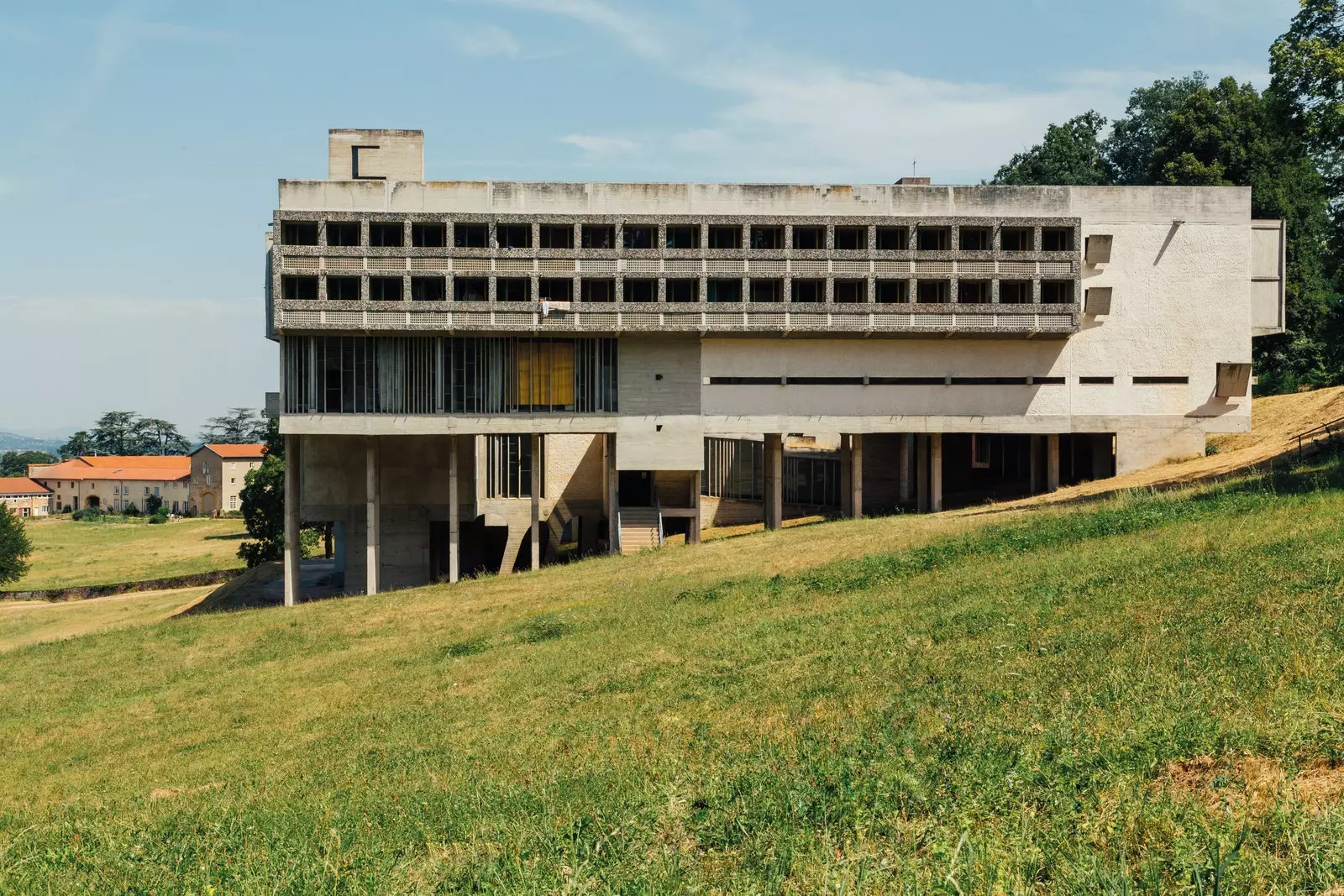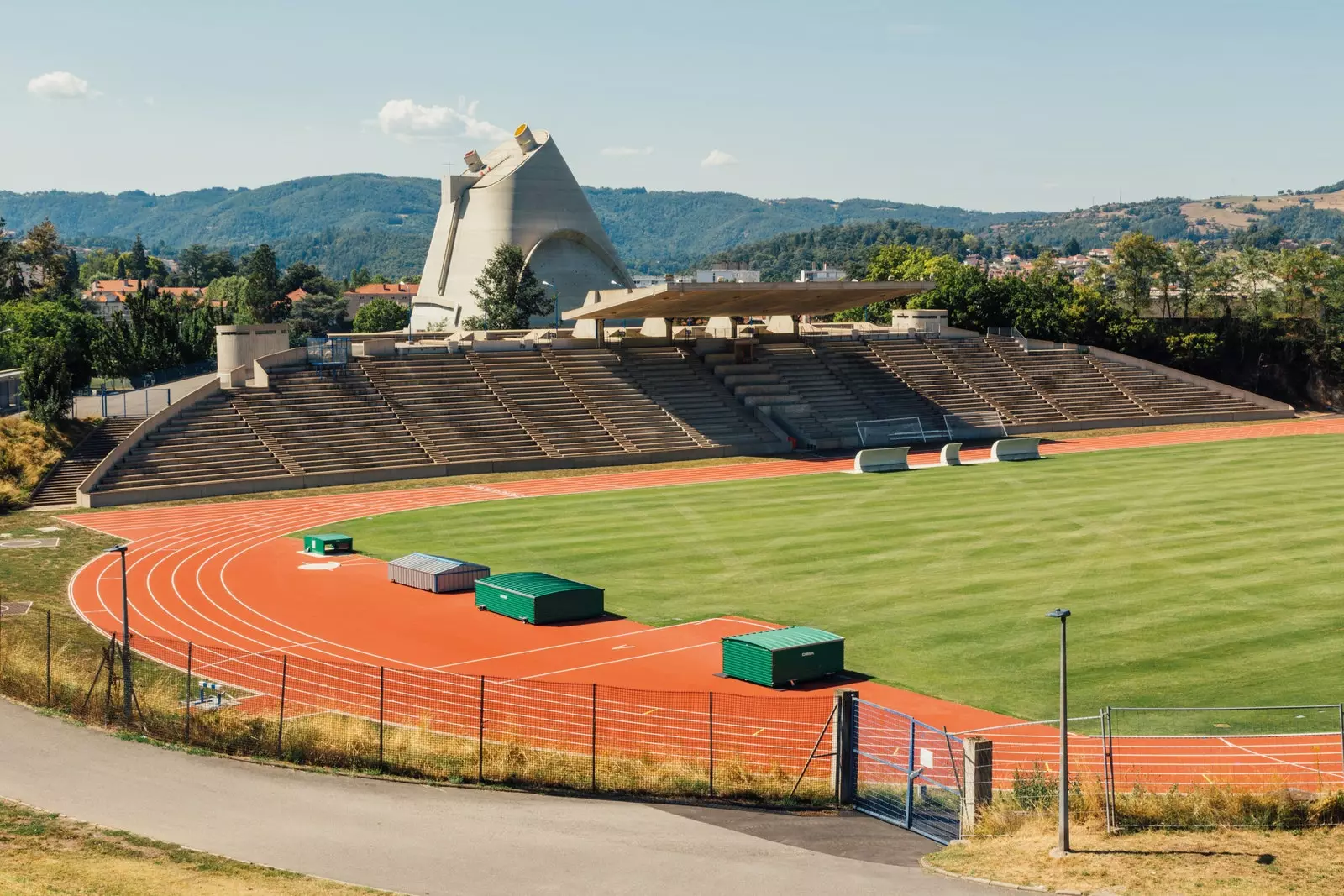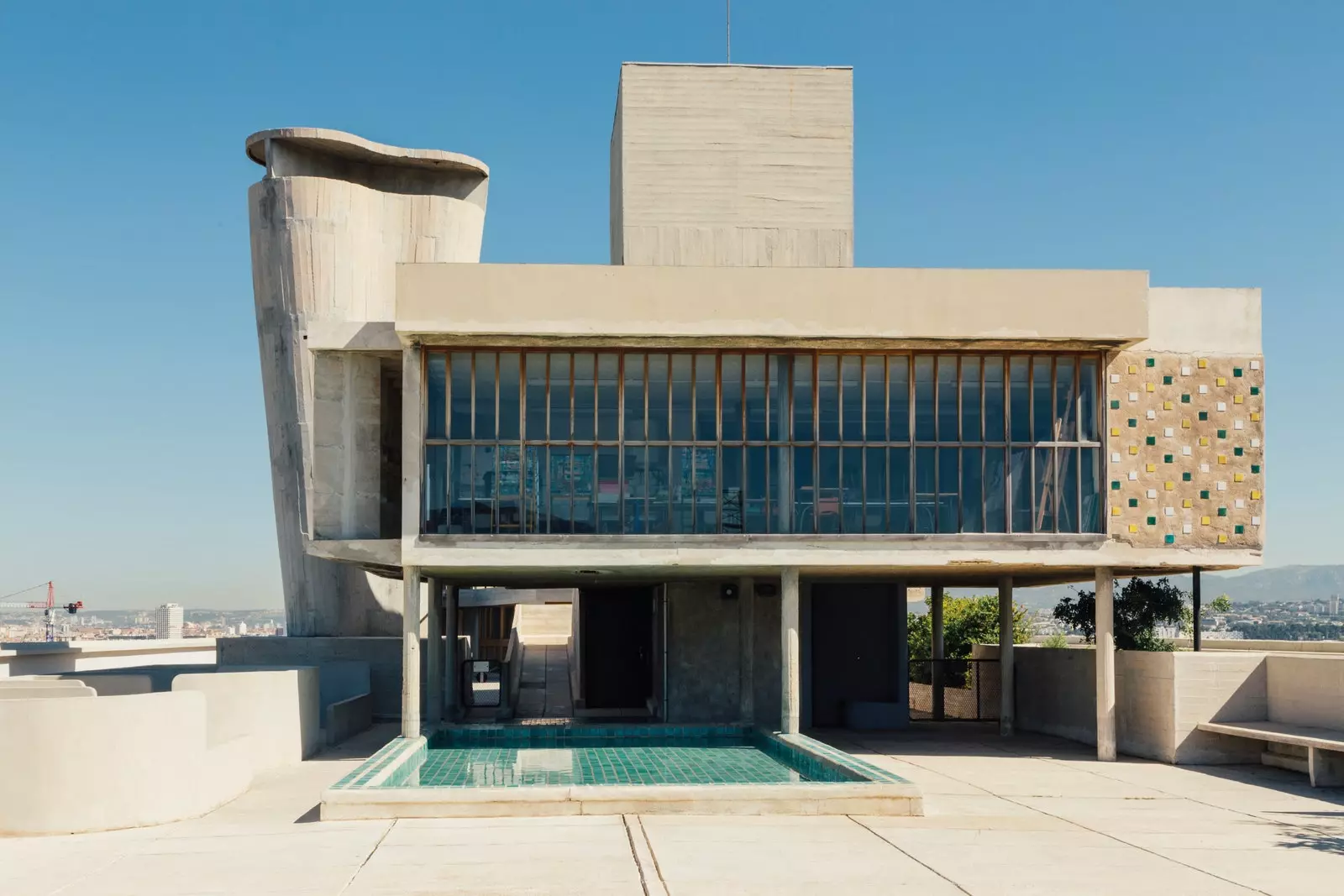NOTRE DAME DU HAUT
Also known – or rather – as Ronchamp due to the city of the same name where it is located, Le Corbusier built this chapel for Catholic worship –and you will have seen it a thousand times in photos– between 1950 and 1955.
Made of reinforced concrete and masonry, its nave with curvilinear, organic shapes reflects the clear intention of the architect to abandon his principles of standardization in order to connect the building with its surroundings.
Everything here is a curve: each wall, the shell that serves as a roof, the towers. The light filters through the south wall thanks to those flared holes of different sizes that dot it. From inside, colored glass screens the sun's rays and thus reinforces a solemnity as austere, as mystical as the most resounding of the Romanesque. L'abri du pèlerin, the refuge for pilgrims that you will see a few meters away, contrasts with its straight lines and its chromatic joy.

La Tourette, Le Corbusier.
LA TOURETTE
It is curious to see that Le Corbusier built the convent of Sainte Marie de la Tourette between 1953 and 1960, almost at the same time as Notre Dame du Haut. A confessed agnostic involved in two ecclesiastical works that he also raised in a radically opposite way. If at our first stop we talked about organicism, here we are before what is perhaps his most purist, most radical work. And more brutalist.
The slope of the hill where it is located –we are in Éveux, near Lyon– helped the architect to plan the distribution of the convent around a rectangular patio dotted with volumes and geometries, such as the oratory with a pyramidal roof.
But without a doubt what is most striking are the cells, of an overwhelming rectilinear austerity. It was Father Couturier, of the Dominican Order, who asked him to create "a silent home for a hundred bodies and a hundred hearts."

Firminy-Vert, Le Corbusier.
FIRMINY-VERT
A house of culture and youth, a housing unit, a municipal stadium, the Saint-Pierre church and a swimming pool, built by the architect André Wogencsky after the death of Le Corbusier.
All this is Firminy-Vert... and it could have been more. It was Eugène Claudius-Petit who, after being elected mayor of Firminy in 1953, commissioned his friend Le Corbusier with an urban plan to create a new district that would reflect all modern comforts.
Said and (almost) done, because the lack of funds meant that only one residential building was built despite the fact that he project was to build 3,500. Nor could the church be completed due to lack of funds until 2003, after thirty years of comings and goings. In any case, Firminy-Vert is the largest concentration of works by Le Corbusier in Europe, surpassed only by Chandigarh, in India.

UNITE D'HABITATION
Here We give you a few reasons – and full of art – to visit Marseille, but it goes without saying that this is perhaps the most important of all if you are passionate about 20th century architecture. Also known as Cité Radieuse, the Unité d'Habitation is considered Le Corbusier's great civil work in the collective housing typology.
Built between 1947 and 1952, it represents the incessant work of the architect to solve the problem of housing... and the need to rethink how to live.
That's why, behind this mass of more than 137 meters in length and 56 in height, intended for 337 flats of 23 different types according to family units, there is also a philosophical study. For Le Corbusier, a house must protect individual freedom, keep the family nucleus integrated and seek collective order, without which such freedom cannot be achieved. A masterpiece.
This report was published in the number 148 of the Condé Nast Traveler Magazine (Fall 2021). Subscribe to the printed edition (€18.00, annual subscription, by calling 902 53 55 57 or from our website). The April issue of Condé Nast Traveler is available in its digital version to enjoy on your preferred device.
